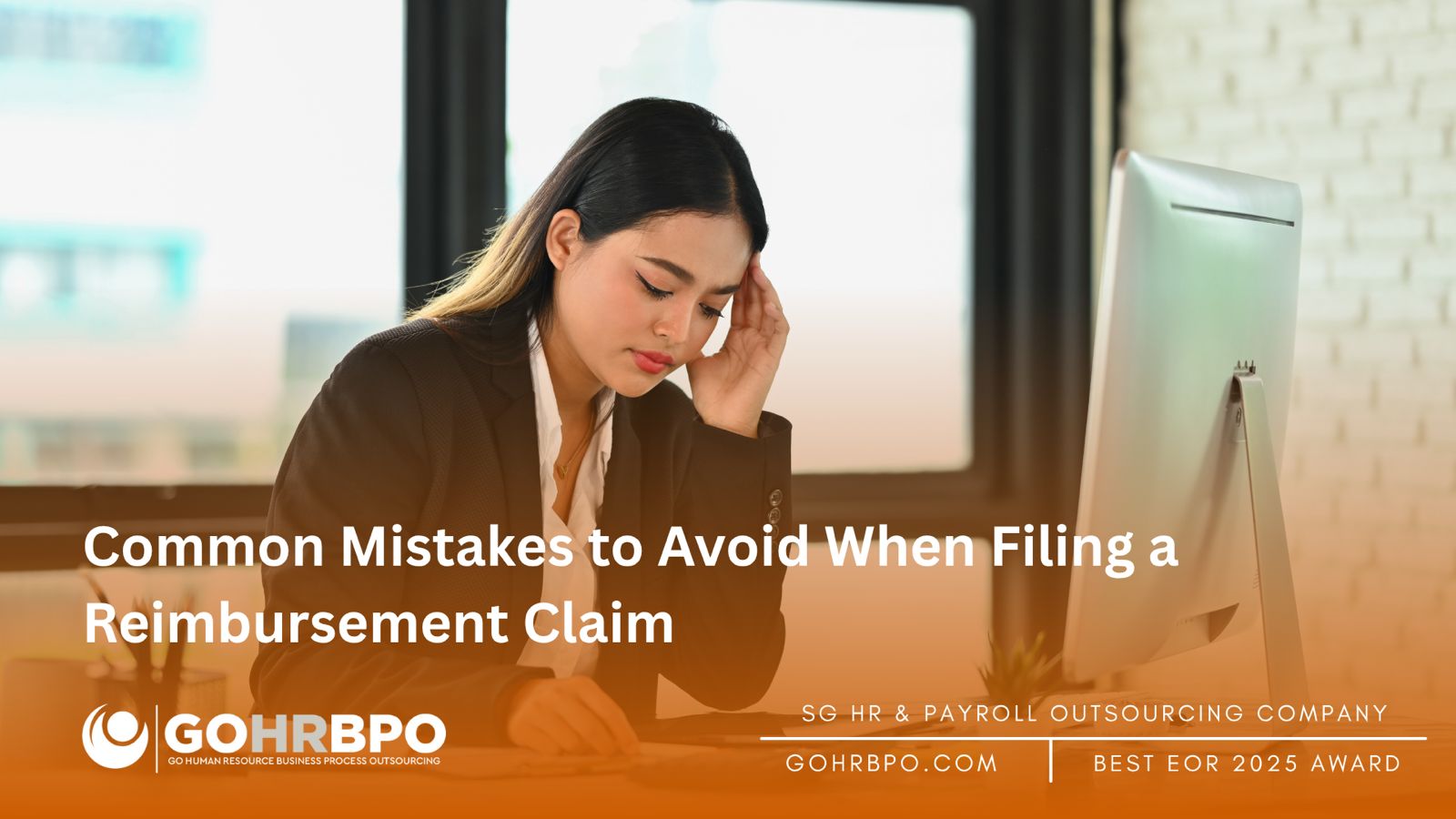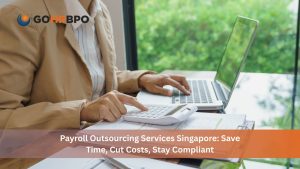Introduction
Yesterday I met a sales manager, and he told me that a month ago he submitted his travel reimbursement that included airfare, meals, and a few taxi rides.
But in the submission, one taxi receipt was missing, and he got late in filing the claim. Because of this, the whole request got rejected.
As a result, it caused him a lot of trouble. Their HR and the finance team had to spend a lot of time sorting out the problem.
Reimbursement claims often look simple if we just think about them, but they can turn into compliance problems if not filed properly.
A simple mistake, like a missing receipt or just a late submission, can lead to your claim being rejected and can also cause trouble with IRAS or MOM.
But most of these problems are avoidable. Once you know what the common mistakes are and the process to do it properly, your reimbursement claims can become easier and compliant.
Why Reimbursement Claims Matter
For SMEs, reimbursement claims affect three important things:
- Employee satisfaction: Employee satisfaction should matter to us the most. When reimbursements are slow or get rejected, employees start to feel frustrated and lose trust in the system.
- Cash flow: If claims are processed late or with errors, it disrupts budgeting and makes expense management a problem.
- Compliance: Compliance is something that is very important. IRAS needs proper documentation for deductible business expenses, and CPF rules separate reimbursements from taxable allowances. You cannot get this wrong. If you do, you have to deal with audits or even penalties.
Also Read: A Guide to Streamlining Agency Payroll Services in Singapore
Common Mistakes to Avoid
Let’s have a look at the most frequent errors, their impact, and quick fixes:
| Mistake | Impact | Best Practice |
| Missing or incomplete receipts | Rejections, loss of tax deductibility | Require receipts; use mobile apps to scan and store instantly |
| Late submissions | Forgotten details, cash flow issues | Set 7-14-day cut-offs; send automated reminders |
| No clear policy | Inconsistent claims, disputes | Define eligible expenses, limits, and workflows in writing |
| Mixing personal & business | Taxable allowances, non-deductible expenses | Define eligible expenses, limits, and workflows in writing |
| Fraudulent/inflated claims | Financial loss, legal action | Tiered approvals, random audits |
| Misclassification | Delays, skewed budgets | Use standard categories/templates |
| Accounting oversights | Reconciliation errors, messy audits | Month-end checklists, payroll integration |
Let’s look at each in more detail:
- Missing or Incomplete Documentation: Incomplete or missing documents are one of the top reasons claims get rejected. Sometimes your receipts go missing, or they don’t have the proper information on them, and it can cancel your claim. Sometimes, people also try to use a duplicate receipt, which can also cancel your claim. Also, IRAS requires SMEs to keep receipts for at least 5 years.
Best practice: The best practice is to make scanning receipts right away using an expense app a habit, or just upload them directly into your HR system. - Late Submissions: Late submissions are another problem. Sometimes employees wait months before submitting a claim. By then, they’ve forgotten the details or misplaced paperwork. This disrupts the whole process.
Best practice: Set a clear deadline for submitting the claim, like within 7–14 days of the expense. Make your HR software send out automatic reminders. - No Clear Policy: If there isn’t a written policy, employees will assume that anything like personal meals or family travels qualifies. That’s when disputes and frustration start to build.
Best practice: Put a policy in writing that mentions eligible expenses, spending caps (say, S$80 per meal), and the approval steps. - Mixing Personal and Business Expenses: Mixing personal and business expenses means a compliance trap. Let’s suppose you give someone a flat S$100 “transport allowance” for an S$80 taxi ride. The extra S$20 is taxable income under IRAS.
Best practice: Always reimburse actual costs with receipts, and make sure to separate personal use from business (like with phone bills). - Fraudulent or Inflated Claims: Fraudulent or inflated claims are not that common, but if they happen, they can be expensive for you. In 2024, a company was charged with fake entertainment claims. Weak controls cost the company a lot. Even small things, like rounding up taxi fares, attack the trust.
Best practice: Use tiered approval workflows, like supervisor for under S$100, director for over S$500, and have random spot checks. - Misclassification of Expenses: Misclassification of expenses is a common mistake. A hotel bill logged as “office supplies” or a client lunch filed under “training” slows everything and affects the budget.
Best practice: Use software that has built-in categories and requires itemised reports to avoid misclassification. - Accounting Oversights: Sometimes claims get approved and paid out, but were never recorded properly in the books. And then when audit time comes, it lands you in a lot of problems.
Best practice: Reconcile claims every month and integrate your expense software with payroll and accounting systems.
Compliance Traps to Watch
Singapore SMEs need to watch out for a few statutory traps that can cause problems for them:
- CPF: If you’re reimbursing actual costs with receipts, that’s fine; it’s not CPF-contributable. But if you give it as an allowance, it’s CPF contributable.
- IRAS: Same story here. Reimbursements that match actual costs are non-taxable. Anything extra is taxable income.
- GST: You can only claim input tax if the invoice is in the company’s name, or if it’s clear the employee was acting on the company’s behalf. Also, always keep those receipts in your company records and make sure they match the expense entries in your books.
Also Read: A Step-by-Step Guide to Managing Startup Payroll Services 2025
How SMEs Can Get It Right
Here are some things SMEs can do to make sure they get their reimbursement process right:
- Automate: Get a digital expense tool. With it, you get mobile receipt capture, auto-categorisation, and built-in policy checks. These features automate everything for you, and you don’t have to do any manual work that can lead to errors.
- Train: Training your employees how to use these tools is as important as getting them. You should run quick refresher sessions every quarter so employees are clear on what qualifies for reimbursement and how to claim properly.
- Monitor: Put some guardrails in place with approval hierarchies, and do random audits. It’s one of the simplest ways to keep fraud in check.
- Integrate: Make sure your expense system is connected with payroll and accounting. That way, everything is integrated and reconciliation is error-free.
Conclusion
Reimbursement claims look like a small thing to do, but if you make mistakes, they can cause big problems.
It can update your employees, and you may even get penalties from IRAS.
The solution is simple: keep the receipts and send claims on time. Also, it is important to have clear rules with the right tools to support them.
For SMEs in Singapore, doing this right helps build trust with employees and makes sure the company stays compliant.






